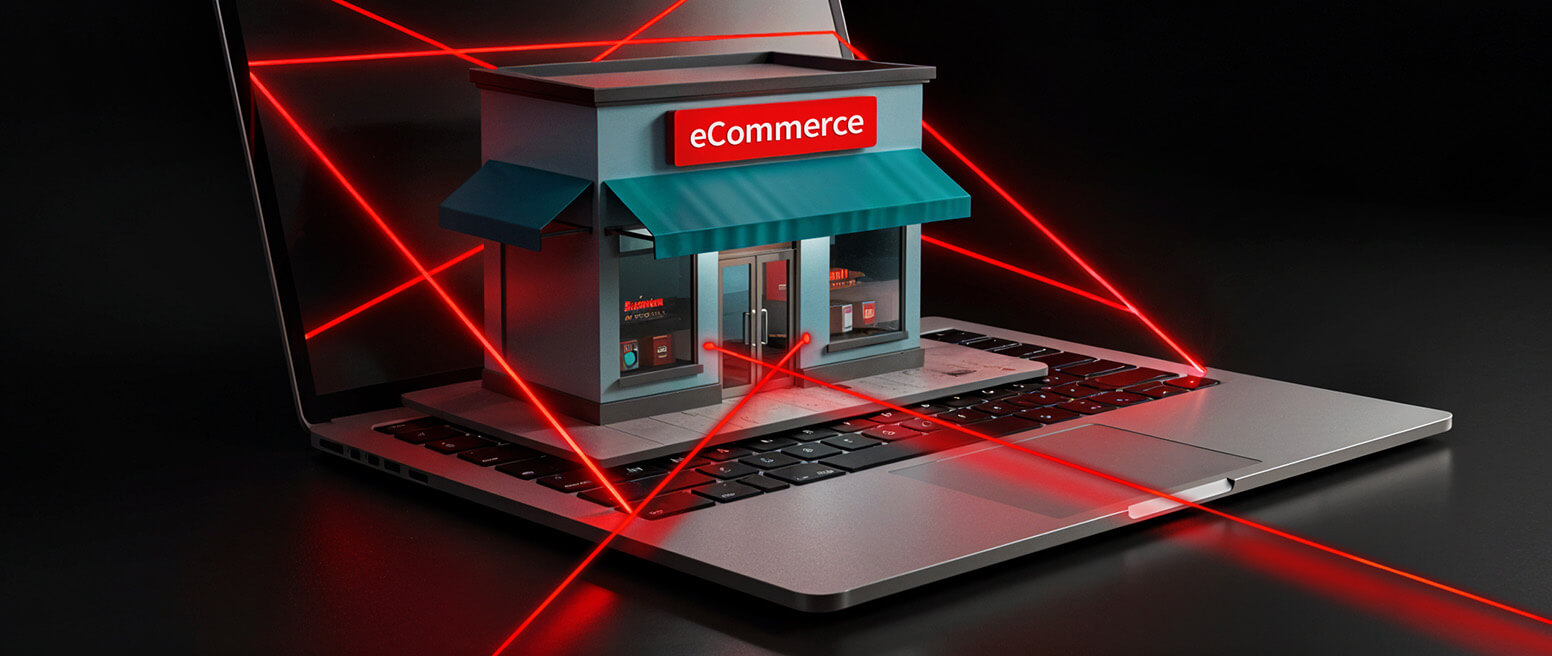Assess & Improve Your Fraud Risk Management Strategy in Six Basic Steps
Think about that feeling you get after a great sales month. You’re breaking records, acquiring new buyers, even getting customers from new markets that you’ve never managed to penetrate before.
Feels good…right?
Well, discovering that a good portion of those sales were fraudulent can crush that feeling faster than a freight train.
You’ll receive less profit than you expected and get hit with fees that you didn’t see coming. In many cases, you’ll lose significantly more than the sale was originally worth.
How serious is this problem? According to Arcose Labs, nearly 23% of all digital interactions in 2020 were fraud attempts. Other reports suggest that successful fraud attacks rose by over 50% in 2021.
Digital fraudsters always seem to be one step ahead. In response, you need to evaluate how vulnerable your business may be to external and internal fraud.
In this post, we’ll give you all the basics of fraud risk management. We’ll see how it works, then outline a multi-stage fraud risk management plan that you can customize to fit your business.
Recommended reading
- The Top 10 Fraud Detection Tools You Need to Have in 2025
- Reverse Email Lookup: Tips, Tools & How to Detect Fraud
- ECI Indicators: How to Understand 3DS Response Codes
- Credit Card Fraud Prevention: A Gameplan for Businesses
- eCommerce Fraud Prevention: A Step-by-Step Guide for 2025
- How Device Fingerprinting Works: Use Cases, Trends & More
What is Fraud Risk Management?
- Fraud Risk Management
Fraud risk management is the process of assessing the potential for fraudulent activity, then developing and implementing strategies to detect and block fraud from both internal and external sources.
[noun]/* frôd • risk • man • ij • mǝnt /
Fraud risk is, in effect, how susceptible your business is to threat. Fraud risk management refers to all your efforts to lower that vulnerability.
Developing a program to manage fraud won’t be easy, though. Fraud is a moving target, and there are almost unlimited potential sources. These tactics are restricted only by the fraudster’s imagination.
Pinpointing fraud from vendors, affiliates, or even your employees can be a nightmare. Transaction fraud is easier to notice but can be equally challenging to fight or prevent.
Of course, there are still steps you can take to protect your business. The key is to identify the particular types of fraud you’re experiencing then build a strategy to mitigate that risk.
Let’s go through the process, step-by-step, and see what it will take to develop a fraud risk management system tailored to your needs.
Step 1: Calculate Liabilities
Before starting, you should have a realistic idea of your current fraud situation. You'll need to know how much revenue you have coming in and how much fraud is currently costing you.
Your total fraud liability encompasses a lot more than just sales revenue. It would help if you also accounted for:
- Overhead costs like lost merchandise, shipping, interchange, etc.
- Chargeback fees
- The cost of internal resources used for fraud management
- Lost future sales and reputational damage from fraudulent activity
You can use the calculator below to quickly tally up a rough projection of your monthly fraud costs:
What are Chargebacks REALLY Costing You?
Annual Revenue Lost:
+ Chargeback Fees:
+ Admin Fees:
+ Cost of Goods & Shipping:
Total Annual Chargeback Cost:
Step 2: Risk Factor Assessment
Done tallying up your fraud liability? It's shocking, isn’t it?
Here’s an even bigger shock: you may be unintentionally contributing to the problem. That's why the next step is to determine your risk exposure.
To do this, you need to conduct a top-to-bottom review of compliance standards, employee practices, return policies, customer service guidelines…anything that might trigger a fraud attack.
Risk factors will vary from one business to the next based on product vertical, sales model, location, and dozens of other factors. Assessing risk must be responsive to all these factors. But, some questions you should probably ask include:
| Questions to Ask |
| What tools do I use to detect fraud? |
| Are there redundancies in my fraud detection processes? |
| Are employees adequately trained to detect common fraud red flags? |
| Am I keeping all software up-to-date? |
| Do I operate in a “high-risk” product vertical? |
| Are my customers located in a region or country more prone to fraud? |
| Am I flagging suspicious transactions? |
| What does my average ticket cost? |
| What payment methods do I accept? |
| Do I employ a sales model known to be more conducive to fraud? |
| Am I reliant on manual review, or is this process automated? |
| Are we compliant with all PCI data security standards? |
| Am I linking into a more extensive data network to identify fraud warning signs? |
| Do I perform periodic reviews to optimize and update procedures? |
You want to eliminate as many risk factors as possible. “Zero” is ideal but seldom feasible, as most businesses will find it impossible to eliminate fraud liability (at least on their own). So, the question is: how much risk are you willing to accept?
Step 3: Establish Your Risk Tolerance Level
What’s an acceptable level of risk? The truth is that it varies.
Several outside factors can affect the situation. For example, merchants in high-risk industries like gambling have more built-in risk than retailers in a low-risk vertical. You can conduct a little research or speak with a professional to better understand your industry's typical range of risks.
Now it’s decision time. Knowing that some fraud is inevitable, you need to look at the numbers and find your risk tolerance level. That’s the highest percentage of revenue you’re willing to risk losing to fraud and/or fraud management.
Go back to the fraud cost you calculated in Step 1. Compare what you’re spending to your risk tolerance percentage, and see how reality compares to your acceptable level of risk.
If you’re at the lower end of average, you may decide that's good enough. More than likely, though, you’ll find that you're currently exposed to more risk than you’re willing to accept. This means you have work to do.
Common Question
Can I reduce my risk exposure without increasing costs?
Yes…but probably not on your own. Getting the proper support is the key to reducing costs while preventing more fraud-related chargebacks.
Step 4: Develop a Blueprint for Fraud Risk Management
So how do you bring your fraud costs in line with your goals?
You could add more fraud prevention tools. But, if they’re not effective, they will only add more cost with no real benefit. Alternately, you could cut back on spending...but then your fraud levels would likely rise.
What you need is a plan. You have to look at your options then decide on a strategy and a timeline for implementation.
Keep your end goal of fraud risk reduction in sight. Decreasing immediate fraud losses will help. At the same time, though, you’re also trying to eliminate risk factors that could trigger fraud in the future.
Designate a person to lead your fraud risk management strategy, and ensure all communications go through them. This person should understand what fraud prevention techniques to adopt and how these fraud risk management principles fit into a larger program. They should also know which fraud detection and risk mitigation tools are currently available, and which will be most effective for each issue. Don’t worry: we’ll cover that in the next section.
Step 5: Deploy Your Fraud Risk Management Strategy
The cornerstone of your strategy must rest on addressing risk management in every form. Internally, this means resolving problem areas, whether it’s personnel or procedural changes. In truth, merchant error may cause more chargebacks than criminal fraud.
Preventing external fraud can involve a variety of tools or strategies, some of which you may already be using:
Compares the billing address given by the customer against the address on file.
CVV Verification
Involves entry of a code that indicates physical possession of the payment card.
Proxy Piercing
Detects whether a buyer is disguising their IP to hide their location or identity.
Helps authenticate buyer’s digital identity in real-time using a unique transaction code.
Geolocation
Identifies the location of an internet-connected device in relation to the buyer.
None of these tools can guarantee whether an order is or isn’t fraudulent. However, they can help point you in the right direction.
Common Question
Do these tools help fight friendly fraud?
Not really. Friendly fraud is a post-transaction threat source. While you can take steps to reduce risk, the only really effective solution for friendly fraud is the representment process.
Step 6: Monitoring, Tracking, and Reporting
As time goes by, how will you know your plan is working? Are your numbers closer to an acceptable percentage? Without monitoring and reporting, you can’t know.
Fraud risk management is an ongoing process. Fraud techniques are constantly evolving, so your strategy will need to be fine-tuned as you go. Draw on data generated by your fraud prevention tools to consistently refine your strategy, detect new threats, and improve your results.
Identify fraud KPIs that are most relevant for your business, then set up processes to collect relevant data from your day-to-day operations. Continually track fraud instances and monitor performance.
Once you compile all that data, you need to develop detailed reports that compare methods, results, and ROI potential. You should review these reports regularly and adjust your strategies according to the evidence. You have to be realistic here; if something’s not working, then acknowledge it and adjust accordingly.
PRO TIP | You May Need Help
This all sounds like a lot of work. As a matter of fact…it is.
Effective fraud risk management is possible, but it requires juggling multiple factors. You need to invest a lot of time and resources on an ongoing basis to track and adjust your strategy.
The most cost-effective solution may be to seek outside help. The right professional fraud management team will already have the tools, knowledge, and expertise needed to do the job right. By targeting problem areas, they should be able to lower your management expenses while increasing your ROI.
At Chargebacks911®, our experts will work closely with your team to put a comprehensive strategy in place. Better yet, we’ll be there to help you manage it well into the future.
A better solution for fraud prevention is at your fingertips. Contact us today to learn more.














